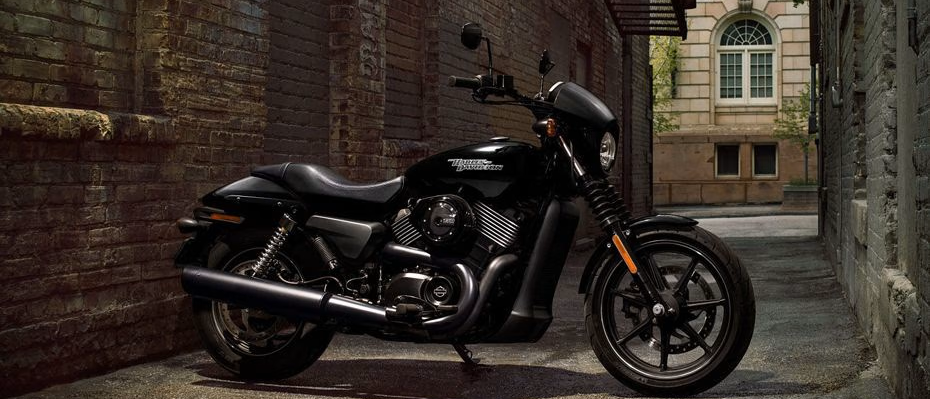What Type of Battery Does Harley-Davidson Use?
Most Harley-Davidson motorcycles use 12V AGM (Absorbed Glass Mat) lead-acid batteries as their factory standard. AGM batteries are a type of sealed lead-acid battery designed to deliver strong cranking power, withstand vibration, and require minimal maintenance—qualities that suit Harley-Davidson’s heavyweight motorcycles and high-performance engines. While a few riders have started experimenting with lithium upgrades, AGM remains the default choice from the factory.
But here’s where things get interesting: while AGM batteries meet the baseline requirements, the market trend is shifting rapidly toward lithium. For dealers and distributors, this transition represents not just a technical change but a profitable commercial opportunity.
Harley-Davidson’s Factory Battery Choice
For decades, Harley-Davidson has relied on AGM lead-acid batteries as the go-to option across its motorcycle lineup. Here’s why:
- High Cranking Power – Harley engines require substantial cold cranking amps (CCA) to start reliably, especially in large touring models. AGM batteries are designed to provide this burst of power.
- Low Maintenance – Unlike flooded lead-acid batteries, AGM units are sealed and do not require regular water refills.
- Vibration Resistance – Harley-Davidson motorcycles are known for their powerful engines, and AGM batteries handle vibration better than conventional flooded batteries.
This makes AGM a practical and cost-effective solution for Harley-Davidson, but it also highlights where opportunities lie for upgrades.
The Limitations of AGM Batteries
While AGM batteries check many boxes, they come with limitations that often frustrate Harley owners:
- Shorter Lifespan – AGM batteries typically last 2–4 years under regular use, depending on climate and riding habits.
- Heavy Weight – At 15–20 pounds, they add unnecessary bulk to already heavy motorcycles.
- Slower Charging – Compared to lithium batteries, AGM takes longer to recharge fully.
- Performance Decline – Riders often notice weaker starts after just a year or two, leading to frequent replacements.
For a deeper dive into why Harley-Davidson riders are increasingly moving away from traditional AGM batteries, check out our article on Harley-Davidson motorcycle battery replacement and the growing shift to lithium.
Battery Needs Across Harley-Davidson Models
Although Harley-Davidson motorcycles largely use 12V systems, different model families place varying demands on their batteries:
- Touring Series – Large displacement engines and added accessories (lights, infotainment, heated grips) require high-capacity AGM batteries with strong CCA.
- Softail Series – Balanced between power and weight, requiring solid CCA but slightly smaller battery cases.
- Sportster Series – Lighter and more compact, but still dependent on reliable 12V batteries for strong starts.
Understanding these differences is critical for both owners and distributors who need to stock the right replacements.
If you’d like a detailed breakdown of voltage requirements and how they affect replacement choices, see our complete voltage guide for Harley-Davidson motorcycle batteries.
Why Lithium Batteries Are Becoming the Smarter Choice
In recent years, lithium iron phosphate (LiFePO₄) batteries have emerged as a superior alternative to AGM for Harley-Davidson motorcycles. Here’s why more riders—and more importantly, more dealers—are making the switch:
- Longer Lifespan – Lithium batteries typically last 5–8 years, with 3,000+ cycles compared to AGM’s 500–800.
- Lighter Weight – Up to 50% lighter, improving overall bike handling.
- Faster Charging – Charges up to 4x faster than AGM, reducing downtime.
- Consistent Performance – Delivers strong cranking power even in cold weather.
- Lower Total Cost of Ownership – Fewer replacements mean higher long-term savings for customers.
To explore lithium solutions tailored for Harley-Davidson motorcycles, take a look at our 12V motorcycle lithium battery lineup, designed for reliable starts, longer life, and higher ROI for dealers and fleet managers.
Commercial Opportunity for Dealers and Distributors
From a business perspective, Harley-Davidson’s dominance in the North American motorcycle market makes this an attractive opportunity for battery distributors and resellers:
- Market Size – Harley-Davidson consistently holds one of the largest market shares in the heavyweight motorcycle category in the U.S. With hundreds of thousands of active riders, the demand for replacement batteries is ongoing.
- Replacement Cycle – Most riders replace their batteries every 3–5 years, creating steady repeat business.
- Profit Margins – Lithium batteries command a higher upfront price, but the value proposition for customers (longer life, fewer issues) allows dealers to justify the premium while increasing margins.
- Differentiation – Offering lithium upgrades sets dealers apart from competitors who continue to rely solely on AGM stock.
For B2B buyers, distributors, and fleet managers, the takeaway is clear: Harley-Davidson riders represent not only a loyal customer base but also a growing appetite for premium battery solutions. Positioning lithium as the go-to upgrade is a chance to strengthen relationships, increase profitability, and future-proof your product lineup.
Conclusion
So, what type of battery does Harley-Davidson use? The straightforward answer is 12V AGM lead-acid batteries. But as rider expectations evolve, the future clearly points toward lithium technology.
For individual riders, the upgrade means better performance and fewer headaches. For dealers and distributors, it means unlocking new revenue streams and building stronger customer loyalty.
Now is the time to align with the trend and offer lithium as the smarter choice for Harley-Davidson motorcycles.


